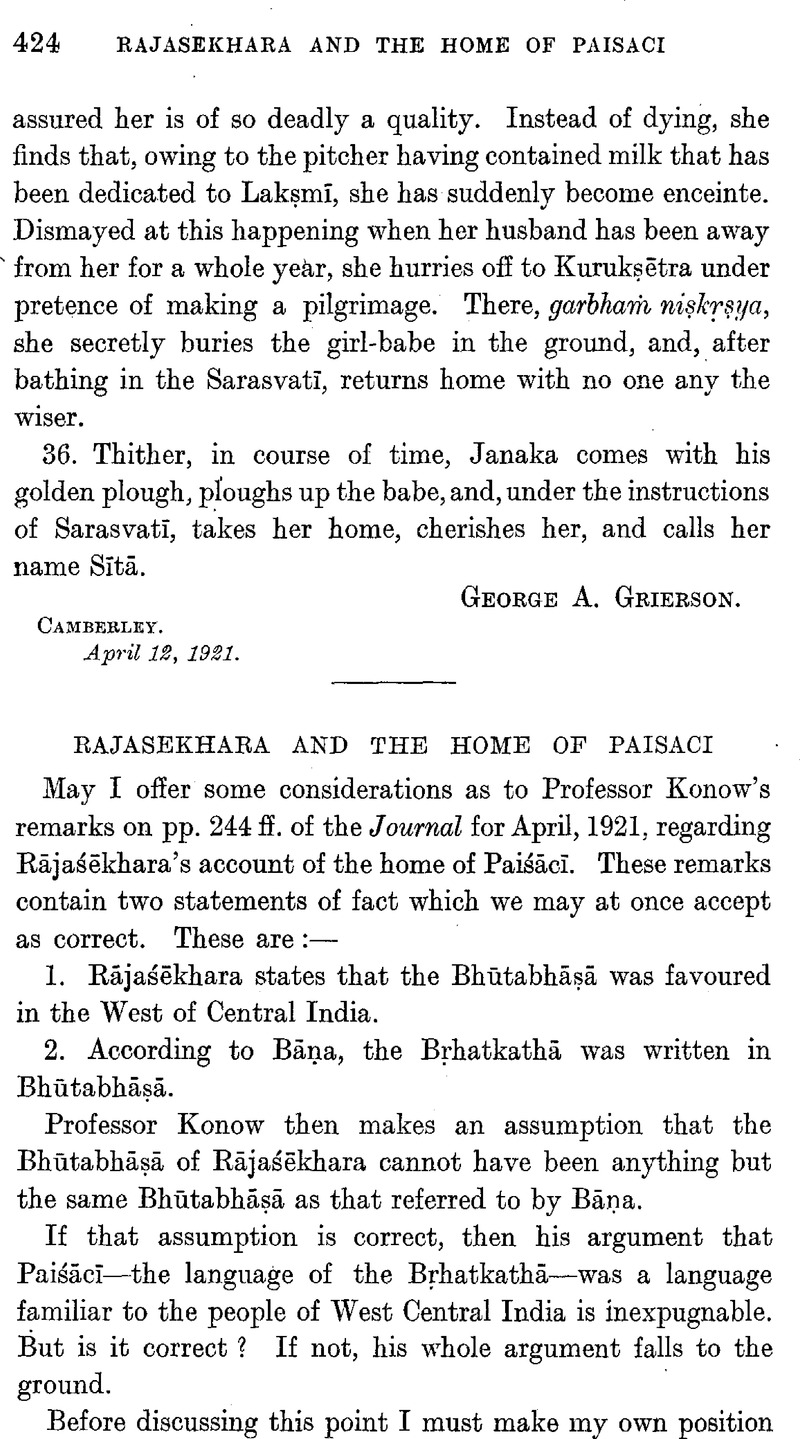Article contents
Rajasekhara and the Home of Paisaci
Published online by Cambridge University Press: 15 March 2011
Abstract

- Type
- Miscellaneous Communications
- Information
- Copyright
- Copyright © The Royal Asiatic Society 1921
References
page 425 note 1 Cf. ZDMG., lxvi, p. 76.Google Scholar
page 425 note 2 Owing to the importance of Hēmacandra's grammar, it is the Prakrit of the Western school that has attracted the attention of European scholars.
page 425 note 3 Cf. Siṁharaja, , xii, 42.Google Scholar
page 426 note 1 Krarnadīśvara's grammar devotes only two sūtras to this language.
page 426 note 2 The one exception is that Vararuci does not allow the hardening of sonants at the beginning of a word or in conjuncts, while the later writers do. It is curious that Hēmacandra evidently knew of this discrepancy in writing his very brief account of Cūlikāpaiśācika (iv, 327), i.e. of the Paiśācī of the Easterners, which he himself differentiates from his own Paiśācī (so also Trivikrama). Here both he and Trivikrama plainly refer to Vr. x, 3, and equally plainly, rightly or wrongly, misunderstand what is there said. Vr. says that sonants become surds. ayujōr, i.e. when not forming part of a conjunct consonant. Hc. and Tr. both interpret the expression as meaning “not in the case of the root yuj-”. From this it is plain that they read ayuji in their copies of Vararuci, and that they had not seen Bhāmaha's commentary. It is hardly necessary to point out that ayuji could also have the sense meant by Vr.
- 1
- Cited by




